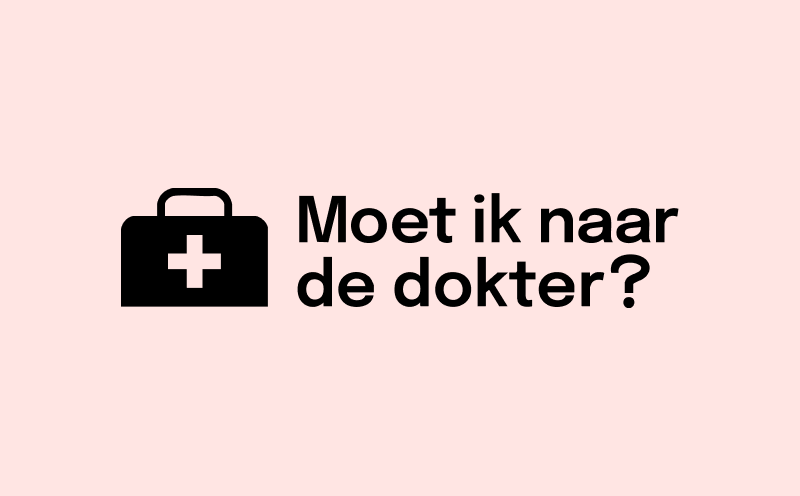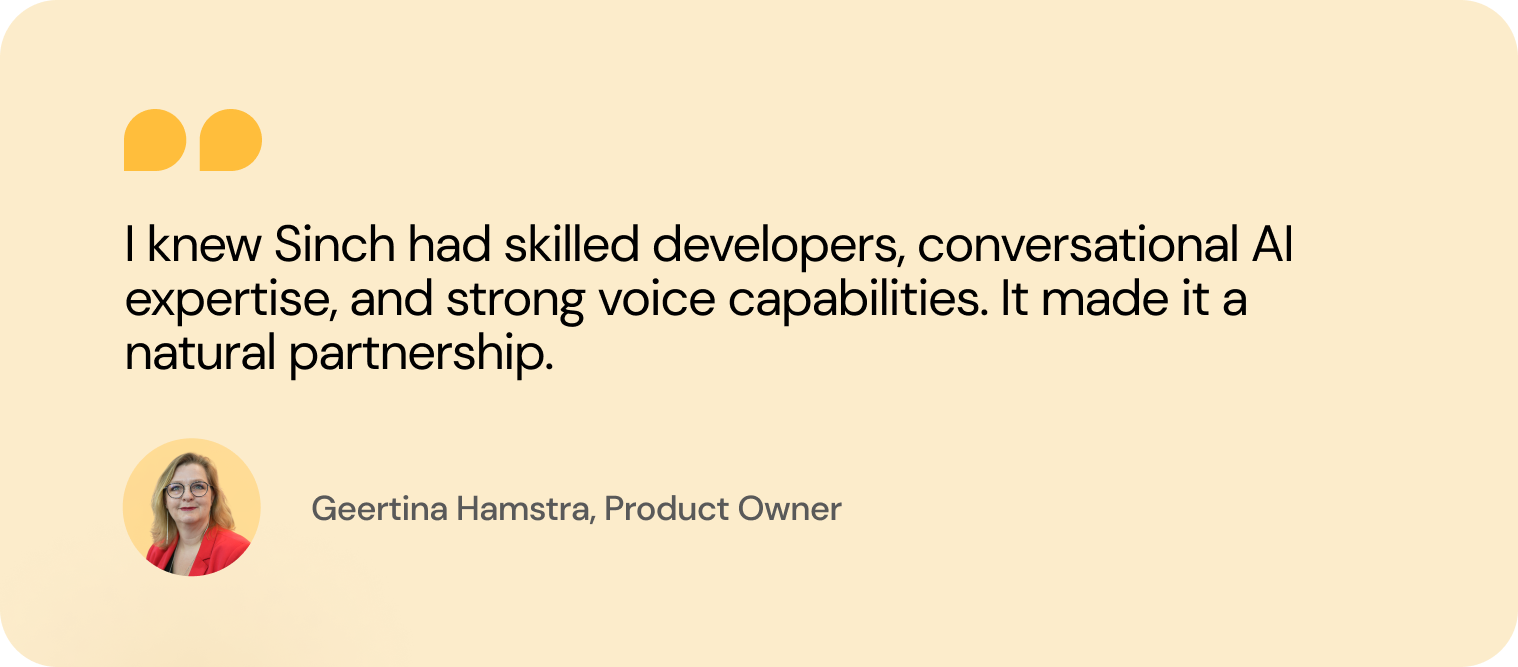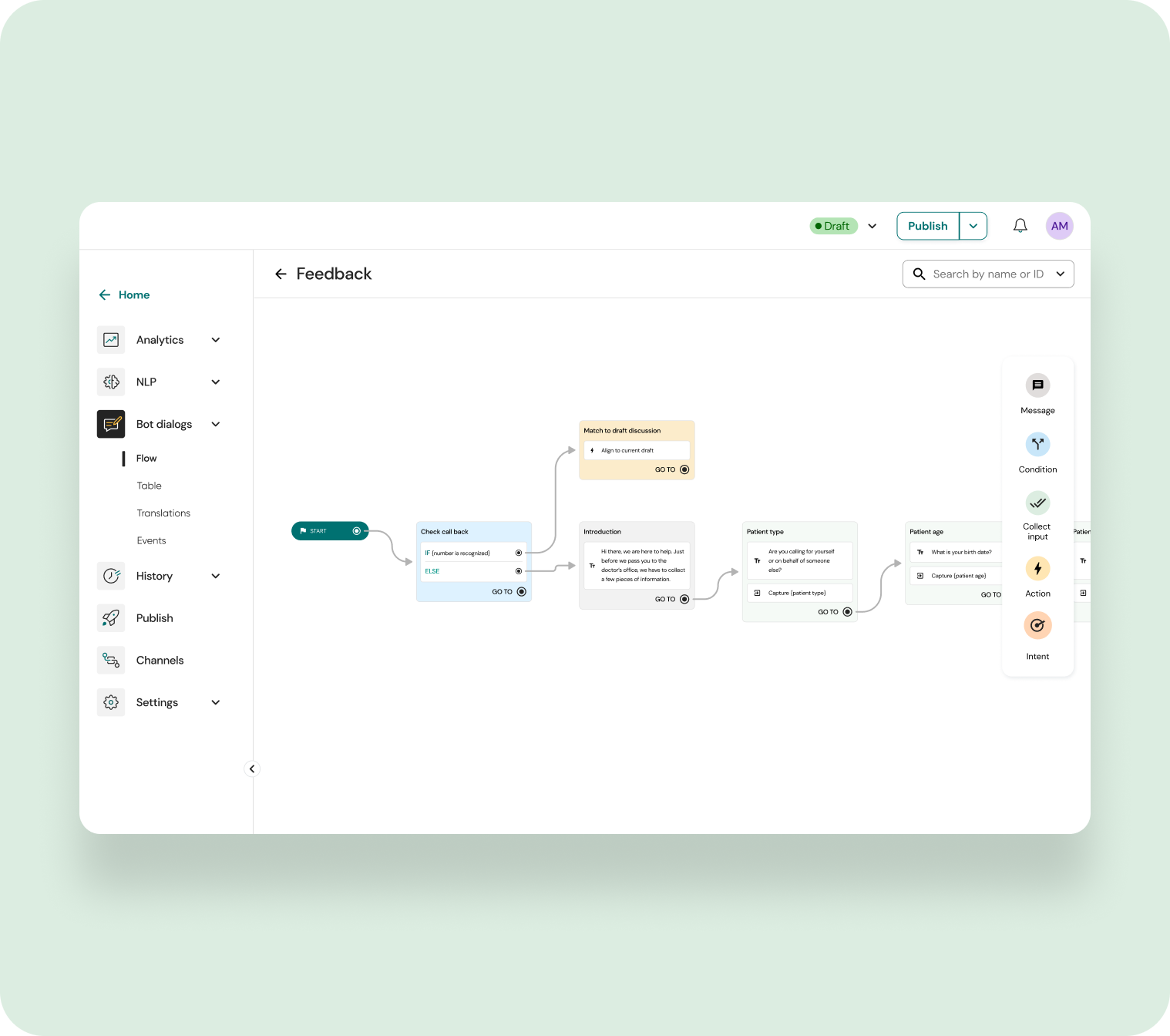Customer Story
How MINDD built an AI-enabled voice chatbot to safely triage patients

Customer Story

Challenge: Route urgent medical calls to human agents faster
Solution: Combine Sinch’s AI chatbot builder and voice technology to triage patients
Results: More calls answered and a safer patient experience
“It’s been a great experience working with Sinch because feedback flows both ways. They think deeply about the problem we’re trying to solve.“
Doctors in the Netherlands deal with over seven million calls daily, with an estimated 43% coming from people who don’t need medical attention.
This places an immense burden on understaffed medical practices and creates long phone wait times for patients — which is dangerous for those who need urgent care.
That’s where MINDD comes in. Standing for Moet Ik Naar De Dokter or “Should I go to the doctor?”, MINDD provides an online tool that helps individuals decide whether they need medical care.
Seeing a chance to further aid medical offices in managing their call loads, MINDD decided to venture into developing a voice product that sorts calls based on urgency. They brought in conversational AI expert Geertina Hamstra on to lead the initiative.
“My assignment was a clear one,” Geertina explains. “Create a voice bot for emergency routing. It sounds so simple. You pick up the phone, run through a couple of questions, and then you get routed. But there are so many technical steps in between to tackle.”
Geertina, a pioneer in conversational AI who launched the country’s first chatbot in 2005, recognized from her extensive experience that choosing the right partner was crucial for the project’s success.
“I’ve been in the chatbot space for years,” says Geertina, “but transitioning to voice involves a completely different engine and approach, presenting an exciting new challenge.”
The project needed more than a standard interactive voice response (IVR) system. The bot had to allow patients to speak naturally in complete sentences and navigate callers through emergencies without getting stuck in a triage loop.
Moreover, the system had to manage phone calls at scale and handle the complexities of the Dutch language, including various accents and dialects. Sinch’s expertise in both conversational AI and voice technology made us the right technology partner for the project. To design and implement the project, Geertina and her team collaborated with Campfire, a Brussels-based conversational AI agency

“I had worked with Chatlayer, Sinch’s AI chatbot builder, in the past,” explains Geertina. “I knew Sinch had skilled developers, conversational AI expertise, and strong voice capabilities. It made it a natural partnership.”
When someone calls the doctor’s office, the bot asks for details such as age, sex, and the reason for the call, allowing patients to respond in full sentences. Using Natural Language Processing (NLP), the bot interprets these responses and captures data accurately —whether it’s the patient’s birthday or symptoms.
The bot then poses a series of questions, created by medical professionals, to triage callers based on symptom severity. The NLP model is trained to recognize over 70 different medical issues, and the system will prioritize calls accordingly.

All this information is securely relayed directly to the doctor’s office, equipping human agents with the necessary data to assist effectively.
The NLP model is also trained to recognize signs of distress. Should a patient urgently need help and request it, the bot immediately shifts them from the standard triage process to an accelerated lane for assistance.
By combining the latest in voice and conversational AI technology, Geertina was able to accomplish her goal of safely pre-triaging patients and ensuring those who need care sooner experience shorter wait times.
However, what she didn’t expect was that this would also speed up the length of the conversations. The bot’s precise data capture feeds into the doctor’s office portal, providing human agents with comprehensive context, enabling them to ask more direct, pertinent questions.
“This means the conversation goes a lot faster,” says Geertina “The shorter the conversation, the more phone calls you can handle and the more time you have for the more severe cases.”
Geertina is continuing to work with Sinch to optimize the bot such as integrating large language models to succinctly summarize patient conversations and exploring new voice engines.
“Starting a project like this comes with its fair share of unknowns and surprises. It’s been a great experience working with Sinch because feedback flows both ways. They think deeply about the problem we’re trying to solve.”